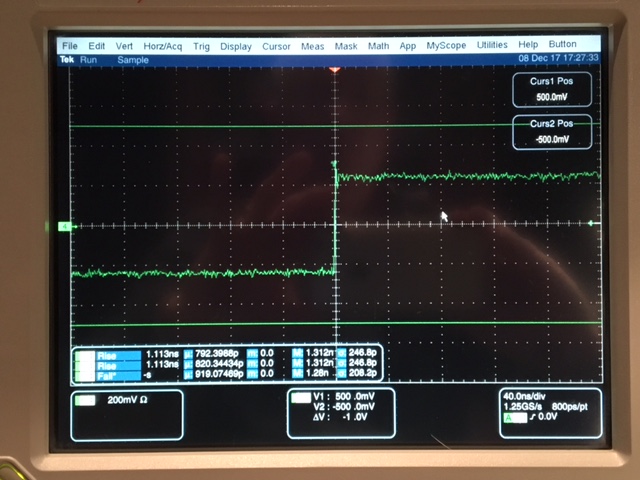I have my DLNA renderer, the Interchange and I have a Raspbery Pi SBC and a Digi HAT board with BNC S/PDIF output that can do DLNA as well as Roon. I set both of these up for DLNA so I could play tracks from Jriver.
This particular Digi board, which is a HAT board for the Raspberry Pi SBC, is claimed to have around 4psec of jitter in the S/PDIF output. I believe this is typically measured using a DAC and spectrum analyzer. I guess they put a single frequency to it and measure deviation. This is the way of measuring jitter for Stereophile and others.
I don't feel that this is an accurate method of measuring jitter, I never have. Because I'm lucky enough to have spent the big bux on a programmable scope (originally $130K) with jitter software, I can make direct jitter measurements. I purchased a 75 ohm terminated input for the scope. That tiny plug-in was over $1K alone. Brother. At least I can plug the S/PDIF output from any device directly into the scope and make all kinds of jitter and signal integrity measurements.
So, I selected a music track that has a lot of dynamics in it and I took samples during the duration of that track. Then I stopped the sampling and generated the plots. This is a distribution of real time intervals, around 42K samples over 5 minutes.
Digi HAT jitter distribution, 20psec per division:

Interchange jitter distribution, 10psec per division:

The Interchange has about 10psec of jitter and the Digi Hat board 60-70psec of jitter. This proves to me that the current method of measuring jitter is insufficient and misleading. The sound quality of the Digi HAT is great for a $150 system, but their jitter claims are somehow wrong. I don't believe it's their fault. They are using a flawed measurement method that everyone else uses.
My Interchange is more musical to me, and I think I know why from these plots. This is the correlation between jitter and sound quality that I have strived for. I think I have something here. I may have to share this method with John Atkinson. It's time we had a decent correlation.
Here are the S/PDIF signals, first the Digi HAT:

And the Interchange:

The rise and fall times for the two devices are almost identical, around 1.11nsec, but my Interchange has the same risetime with less voltage swing. The Interchange has a swing of .5V P-P like the spec requires and the Digi Hat board is more like .75V P-P.
Steve N.